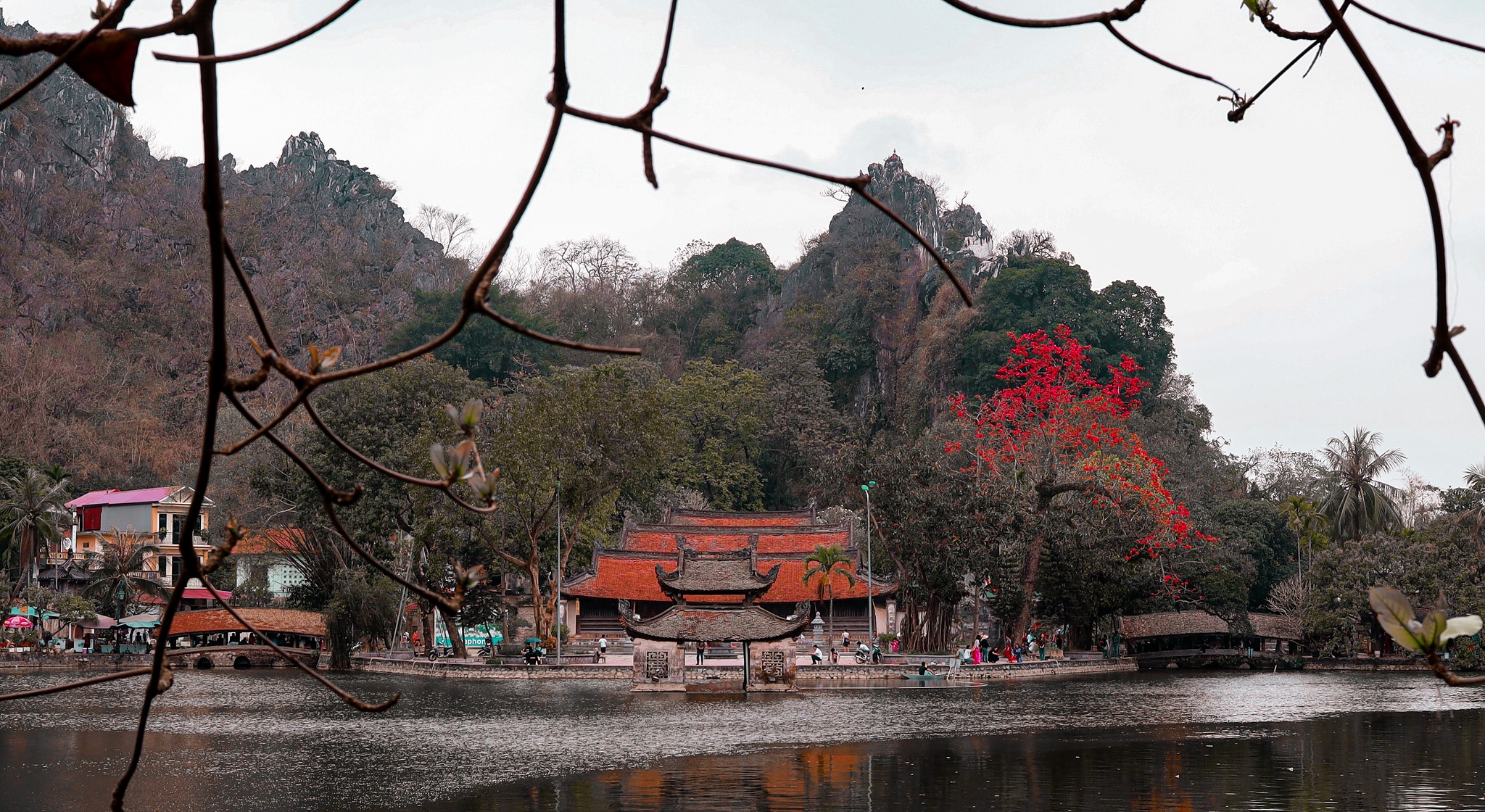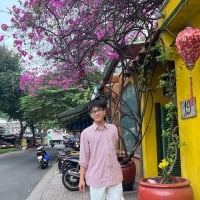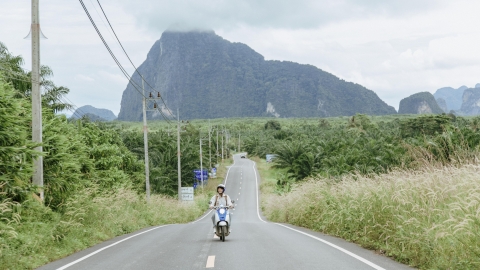Dau Pagoda
Dau Pagoda, also known as Dien Ung (延應寺), Phap Van (法雲寺) or Co Chau, is located in Thanh Khuong ward, Thuan Thanh town, Bac Ninh province. The pagoda began construction in 187 and was completed in 226. This oldest pagoda is closely associated with the history of Vietnamese culture and Buddhism, and was ranked as a historical relic by the State on April 28, 1962.

This oldest temple is associated with the history of Vietnamese culture and Buddhism.
Dau Pagoda is associated with the legend of Buddha Mother Man Nuong worshiped at the Ancestral Temple in Men village, Man Xa. The pagoda was rebuilt in 1313 and was restored many times over the following centuries. King Tran Anh Tong ordered the first-ranking scholar Mac Dinh Chi to rebuild Dau Pagoda into a hundred-room pagoda, a nine-story tower, and a nine-span bridge. Currently, in the upper hall, only a few carvings from the Tran and Le dynasties remain.
The most prominent of the pagoda's structures is the Hoa Phong tower. According to ancient documents, during the Tran Dynasty, the first-ranking scholar Mac Dinh Chi restored the Dau Pagoda and built a 9-story tower. The remaining architecture of the tower dates back to the Later Le Dynasty. The tower was built of old baked bricks, with three floors and a height of 15 meters.
Tran Quoc Pagoda
Tran Quoc Pagoda (Khai Quoc Pagoda) is one of the oldest pagodas in Hanoi in particular and Vietnam in general. This pagoda was built under the reign of King Ly Nam De (544 - 548), located on a small island in the northeast of West Lake, Hanoi. This used to be the Buddhist center of Thang Long citadel during the Ly - Tran dynasties. Tran Quoc Pagoda is famous for its sacredness, attracting many Buddhist followers, visitors, and domestic and foreign tourists.
The temple complex is a complex of many layers of houses with three main buildings connected to form the word "Cong", including: the front hall, the burning house and the upper hall. On the temple door, the three words "Phuong Tien Mon" are still written. Both parallel sentences are written in beautiful Nom script: "The sound of horse-drawn carriages passing through the secular road/ Opening the face of the country, standing at the Zen door".

Tran Quoc Pagoda is located right in the center of Hanoi so it is visited by many domestic and international tourists.
Tran Quoc Pagoda has an architecture like a blooming lotus, reminding people of the lotus platform of Buddha. In the large courtyard in front of the facade, a large incense burner is placed in the middle for visitors and Buddhists to offer incense. In addition to the original architecture, in 2003, the pagoda held the inauguration of the 15 m high Lotus Stupa, with 11 floors, each floor has 6 elegant white Amitabha Buddha statues made of precious stones, on top of which is a lotus tower also carved from stone.
Immersing yourself in the quiet and peaceful picture of Tran Quoc Pagoda, tourists also have the opportunity to explore the architectural art on the carvings. Many parts of the tiled roof of the pagoda are covered with moss, but Tran Quoc has not lost its harmonious beauty. That is what adds to the timeless appeal of the thousand-year-old sacred pagoda.
Tay Phuong Pagoda
Some books and newspapers about Tay Phuong Pagoda claim that it was built during the Mac Dynasty, but there is no proof. Tay Phuong Pagoda's Chinese name is "Sung Phuc Tu 崇福寺", another name is Tay Phuong Co Tu. The pagoda is about 40km from the center of Hanoi, located at the top of Cau Lau hill, Yen village, Thach Xa commune, Thach That district, Hanoi.
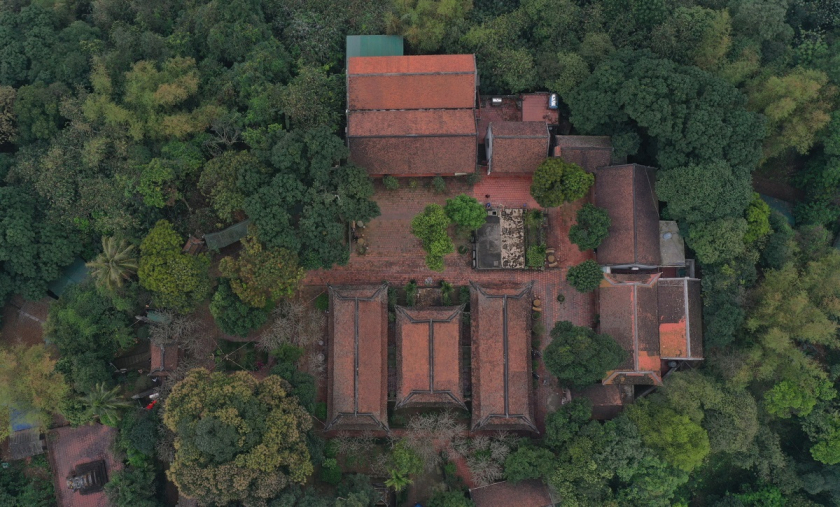
The temple lies peacefully and quietly amidst the vast and majestic natural landscape. When visiting the temple, visitors will feel the ancient features with traces of old times. (Photo: Vnexpress)
In 1632, under the reign of King Le Than Tong, the pagoda built a 3-room upper hall, a 20-room rear palace and a corridor. Around 1657 - 1682, King Trinh Lac of Tay Do destroyed the old pagoda and rebuilt a new pagoda and three-door gate. In 1794, under the Tay Son dynasty, the pagoda was completely restored and had a new name, "Tay Phuong Co Tu". The external appearance and architecture of the pagoda were completely preserved as they are today.
One of the attractions for tourists when coming to Tay Phuong Pagoda is the many statues of the Dharma - rare masterpieces in the art of religious sculpture. If you pay attention, you will see statues carved with patterns, chrysanthemums, dragons, phoenixes, and tigers with exquisite carvings everywhere. These carvings are all made by the talented artisans of Chang Son village - a famous carpentry village.
Perfume Pagoda
Huong Pagoda has a history dating back to the 15th century. The pagoda was built on a large scale around the end of the 17th century, then destroyed during the Indochina War in 1947, then restored in 1989 by Venerable Thich Vien Thanh, under the guidance of the late Venerable Thich Thanh Chan.
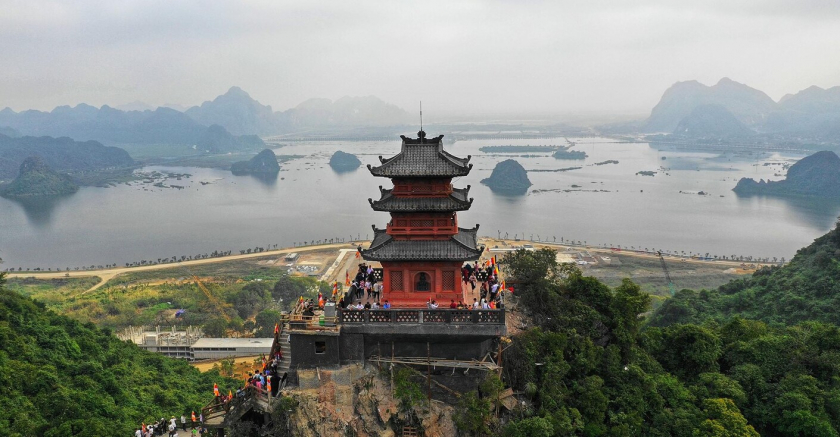
Many tourists come to burn incense and visit the temple in early spring.
In fact, Huong Pagoda or Huong Son is a whole cultural and religious complex of Vietnam, including dozens of Buddhist temples, several temples, communal houses, and agricultural beliefs. The center of Huong Pagoda is located in Huong Son commune, My Duc district, Hanoi, on the right bank of the Day River. The center of the temple complex in this area is Huong Pagoda located in Huong Tich cave.

Perfume Pagoda is famous for its sacredness.
People believe that if they go to Huong Tich cave at the beginning of the year and burn incense and pray sincerely, all their wishes will surely come true. The good news spreads far and wide, so every year Huong Pagoda welcomes millions of Buddhists to come here to worship, enjoy the spring scenery and enjoy the scenery. Huong Pagoda has become a journey to the Buddha realm for Buddhists and tourists from all over the world, and is the inspiration for many famous poets and writers.
Thay Pagoda
Located about 20km from the center of Hanoi, Thay Pagoda is located at the foot of Sai Son Mountain (Thay Mountain, Phat Tich Mountain) in Sai Son Commune, Quoc Oai District, old Ha Tay. In the space of majestic mountains and hills, Thay Pagoda has a peaceful and quiet appearance.
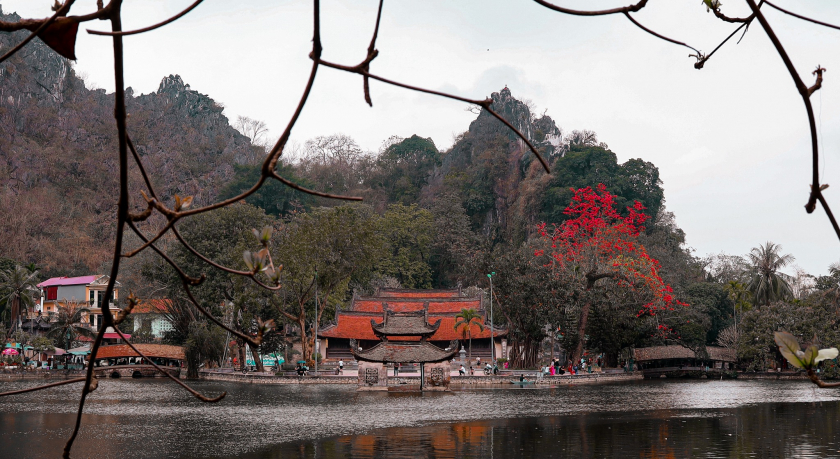
Thay Pagoda in the season of blooming cotton trees.
At first, Thay Pagoda was just a small hermitage (Huong Hai Am) - where Zen Master Tu Dao Hanh presided. King Ly Nhan Tong had it rebuilt, including two pagoda clusters: Cao Pagoda (Dinh Son Tu) on the mountain and Duoi Pagoda (ie Ca Pagoda, whose Chinese name is Thien Phuc Tu). In the early 17th century, Dinh Quan Cong and the royal family took care of the restoration and construction of the Buddha hall, the Saint hall; then the rear house, the stele house, and the bell tower.
According to feng shui theory, the pagoda was built on a dragon-shaped land. In front of the pagoda, the left side is shaped like Long Dau peak, the back and right side of the pagoda lean on Sai Son mountain. The pagoda faces south, there is a large lake named Long Chieu (Long Tri) in front of the pagoda, between Sai Son and Long Dau. The pagoda yard is like a dragon's jaw, the water pavilion is like a dragon's pearl. The Nguyet Tien Kieu and Nhat Tien Kieu bridges are like two dragon whiskers.
The ancient pagoda with curved tiled roof was built quite spaciously with unique Tam-shaped architecture including Ha Pagoda, Trung Pagoda and Thuong Pagoda parallel to each other. The pagoda is surrounded by a clear lake with blooming flowers, a water pavilion, a water puppet show place and two small bridges: Nhat Tien Bridge facing Tam Phu Temple, and Nguyet Tien Bridge connecting to the road up the mountain.
Thay Pagoda, with its natural beauty and historical and cultural values, truly makes it an attractive tourist destination. On the majestic mountain landscape of Sai Son, Thay Pagoda appears in the quiet, under the misty mist or in the bustling crowds of people going to the pagoda. This pagoda is associated with Zen master Tu Dao Hanh, who had great contributions in teaching, treating people and founding the art of water puppetry.





